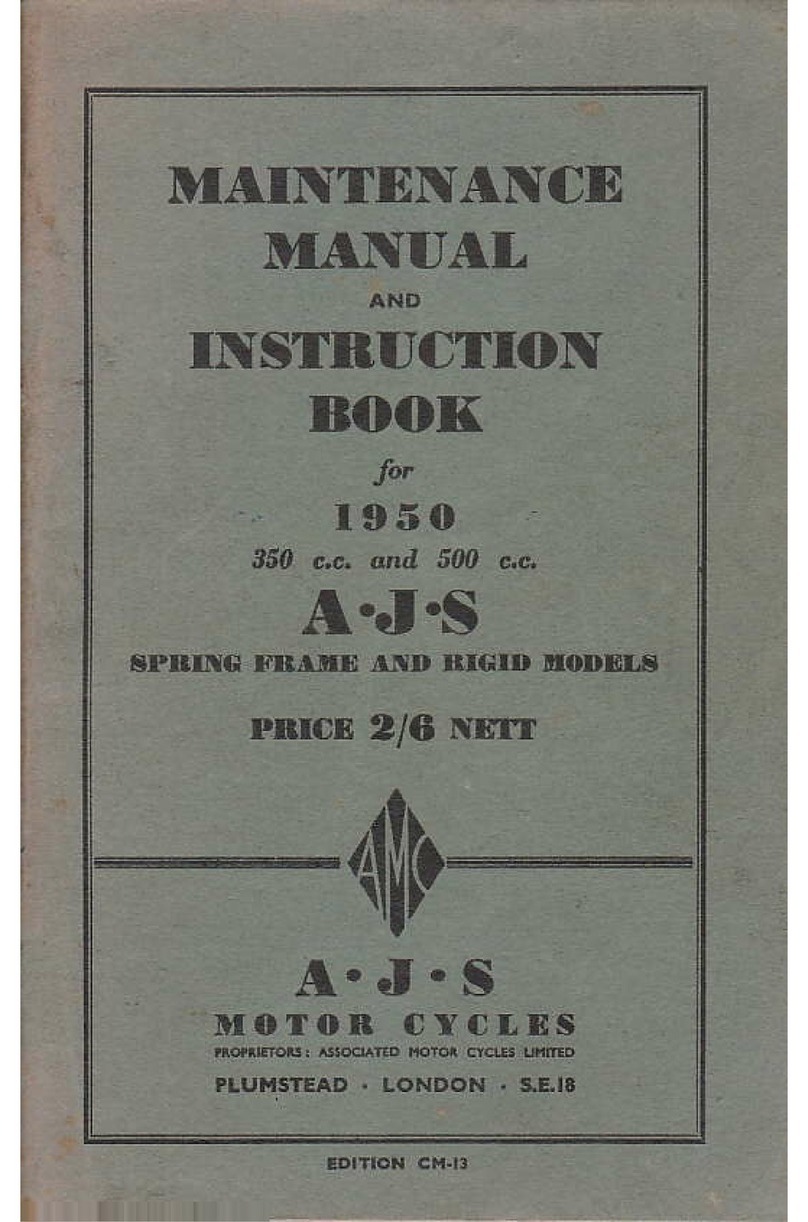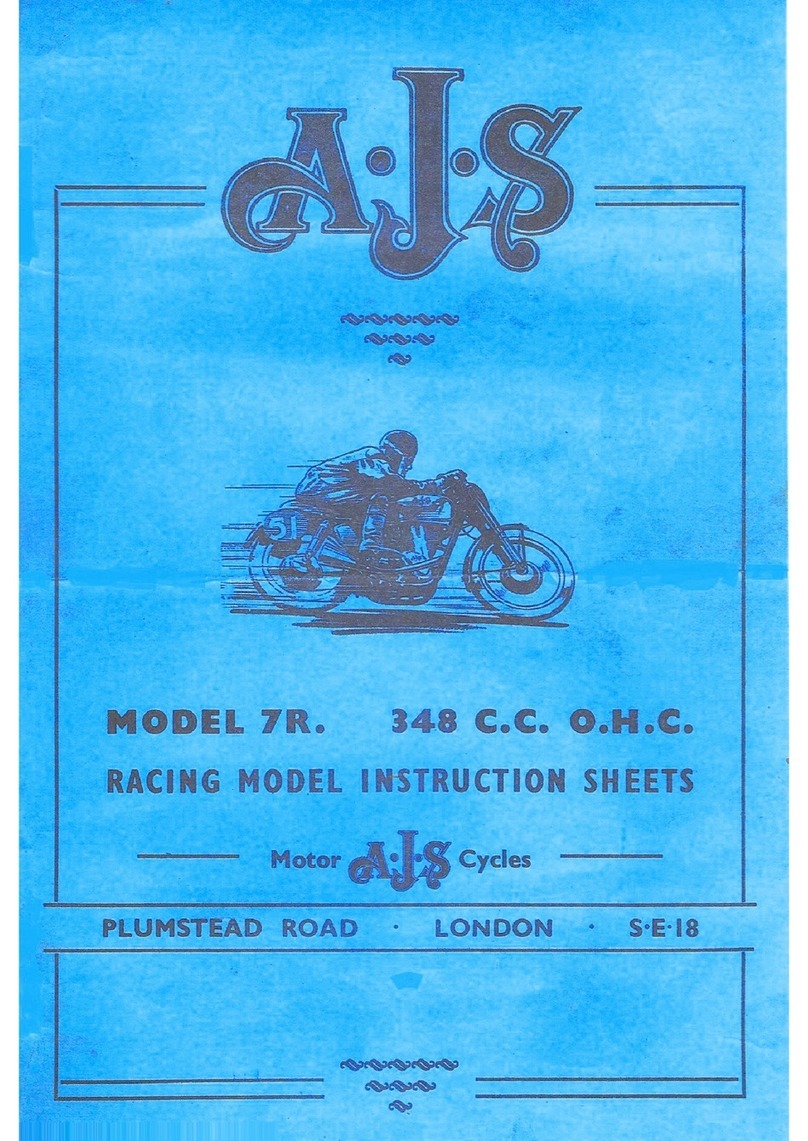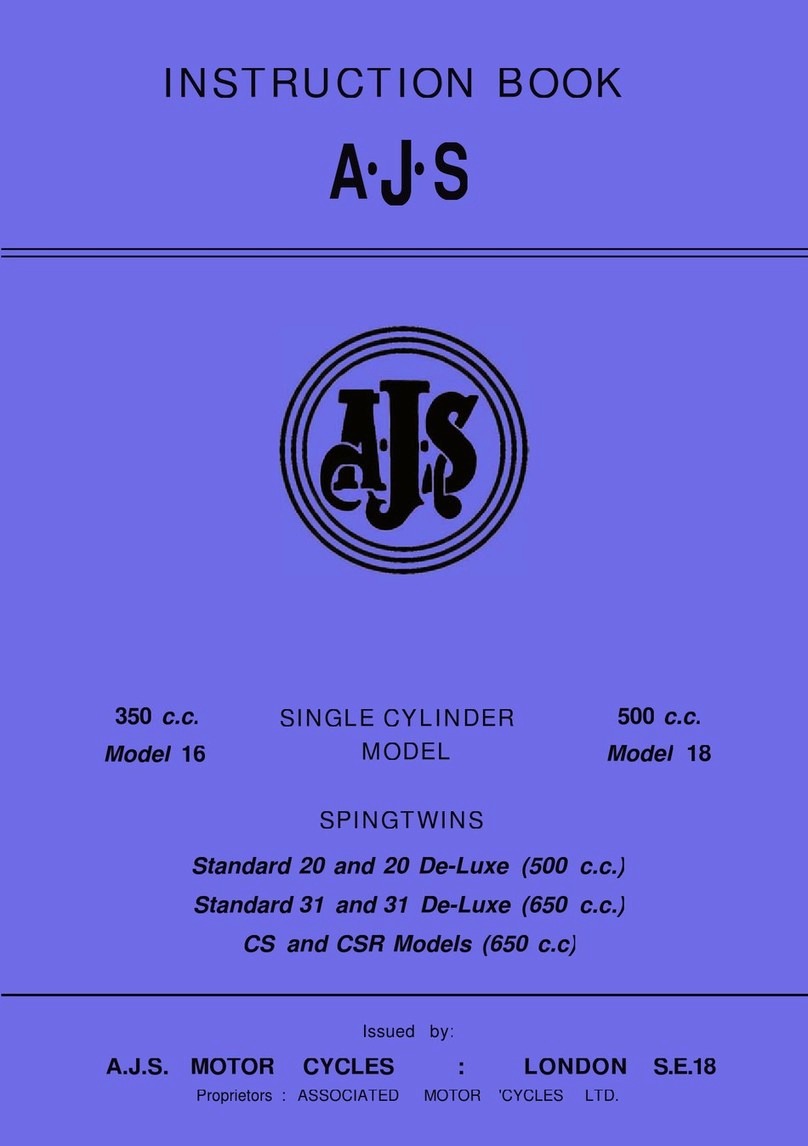
Assuming that the owner is already conversant with, and can ride a motor cycle,
a description of the control layout will be helpful and obviate those anxious few moments
when taking over a new or strange machine. First of all the Four Speed Gear Change, if
hand operated, has the following positions: Low or First Gear at the bottom of the Quadrant,
Neutral is next, Second, Third and Top follow on to the top of the Quadrant- With Foot
Operated Gear Change, first of all find Neutral position by moving the Pedal up or down,
then First Gear is engaged by pressing the lever downwards. Second by raising the Pedal,
and Third and Top Gears are engaged with subsequent upward lifting of the Pedal. The
opposite action is necessary to change to lower gears, the correct way of changing to lower
gears being fairly obvious—merely depress the Pedal downwards to the limit of its travel
to engage each lower gear. In the case of both hand or foot operated Gear Change, do not
impose any stress on the lever by attempting to wrench the lever from one position to another,
as by merely pushing the machine backwards or forwards the Gear Lever can be moved
quite easily to any position.
Handlebar Controls are situated and operated in the following way. Twist grip
Throttle Control—Right Handlebar opening inwards. Air Control lever—Right Handlebar
opening inwards. Front Brake Control Lever—Right Handlebar inverted lever. Clutch
Control Lever—Straight Pull—Left Handlebar. Exhaust Valve Lifter Straight Pull Lever on
Right handlebar. Ignition Control Lever—on left Handlebar—to advance move inwards,
retard outwards. On electrically equipped models the Dipping and Dimming Control switch
is fitted to left Handlebar.
Starring.
—Do not overflood the Carburettor, only depress the Tickler enough to
feel resistance by the float lifting. If Petrol runs out of the Carb. intake turn off the Petrol Tap
before kicking the engine over, but remember to turn this on again after the engine is started.
Starting is much easier if the engine is kicked over once or twice with the throttle wide open,
the air lever closed and the Exhaust Valve lifted afterwards, almost closing the throttle
more than 1/8 when attempting to sta rt the engine.—See Carb. Ins.—Pages 14, 15, 16.
On the Road.
—It does not occur to every rider to adjust the machine to suit his
personal requirements, although numerous make this their first job when taking over a new
machine. With the provision made for adjustment of the Saddle, Footrests, and Handlebars
to suit individual requirements it is possible to obtain a feeling of comfort and security.
Gear Changing.—
Riders will find that it is not necessary or desirable to complet
el
y
withdraw the Clutch when changing gear. After a little practice gear changing can be done
quickly and quietly if the throttle is left slightly open and the Clutch is only withdrawn slightly.
The gear lever should then be moved sharply from one position to another.
Braking.—
Educate yourself to using both front and rear brakes together, using the
rear only, invariably leads to skids on wet roads. On dry surfaces it is possible to apply
considerable pressure to the front brake control without any tendency of the front wheel to
skid, but exercise care on wet or slippery roads, and learn by experiment the maximum amount
of pressure that can safely be applied.
DRIVING INSTRUCTIONS
—3—
































